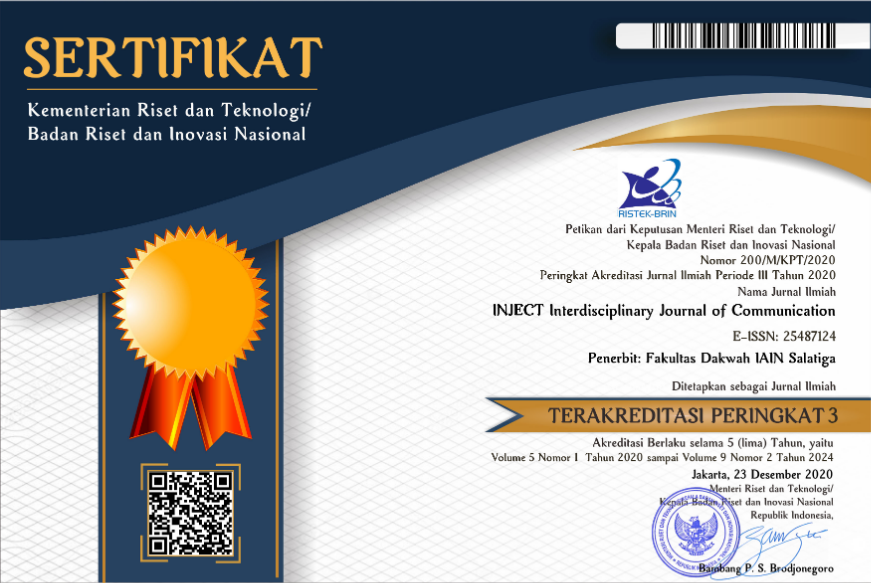The Study of Two Affiliated Modern Stores as an Emphasis and Brand Differentiation
Abstract
It is undeniable that nowadays minimarkets are getting more numerous, Alfamidi and Alfamart seem to have the same thing, but in fact the two minimarkets have differences in their marketing strategies. The purpose of this study is to determine the strategy of developing modern retail Alfamidi as a Compact Supermarket through the promotion of the logo, tagline, mascot, for the purpose of captivating consumers' hearts and becoming number one in the minds of the people (Top of Mind). This study uses a qualitative approach with descriptive and exploratory approaches, namely collecting data based on these factors to find out their roles. The results showed that in terms of product marketing strategies, Alfamidi added a variety of products that are more segmented and varied than other competing retailers. In terms of branding, Alfamidi uses the tagline "Satisfied Shopping at Economical Prices, with a mascot that was created by giving a special touch so that it sticks firmly in the minds of the people. This is part of a differentiation strategy, or concrete steps in communicating the Alfamidi brand that is unique and different from other retail trademarks. However, the facts in the field show that Alfamidi's Product Marketing Strategy and Branding Communication Strategy, even though they have been able to present product uniqueness and customer enjoyment, have triggered awareness of commitment and love for the brand, but have not played a significant role in realizing customer loyalty to the brand (brand loyalty).
Keywords: Differentiation Strategy, Branding, Brand Awareness
Full Text:
PDFReferences
Pudjianto. (2013). Sekarang Eranya Store Without Store. Retrieved from https://swa.co.id/swa/trends/management/sekarang-eranya-store-without-store
Arikunto, S. (2010). Prosedur Penelitian Suatu Pendekatan Praktik. Jakarta: Rineka Cipta.
Sugiyono. (2008). Metode Penelitian Kuantitatif, Kualitatif, dan R&D. Bandung: Penerbit Alfabeta.
Gelder, S.V. (2005). Global brand strategy. London: Kogan Page
Susanto, A.B & Wijanarko, H. 2004. Power branding: Membangun merek unggul dan
organisasi pendukungnya. Jakarta: Quantum Bisnis & Manajemen.
Andi M. Sadat. (2009). Brand Belief. Jakarta: Salemba Empat
Schultz, D.C., & Barnes, B.E. (1999). Strategic brand communication campaigns. USA: NTC Business Books
Dewi, Ike Janita. (2011). Implementasi dan Implikasi Kelembagaan Pemasar Pariwisata yang Bertanggung Jawab. Jakarta: Pinus Book Publisher.
Menayang, Alfred Pieter, Marta, Rustono Farad (2020) Branding of North Sulawesi tourism through the hexagon of competitive identity. (Faculty of Communications Science, Dr. Soetomo University , 2020)
Goffman, Erving. (1959). The Presentation of Seelf in Everyday Life. Jakarta: Erlangga
Kotler & Keller. 2009. Manajemen Pemasaran. Jilid I, Edisi ke 13. Jakarta:
Erlangga
Mulyana, Deddy. 2008. Ilmu Komunikasi: Suatu Pengantar. Bandung: Remaja Rosdakarya.
Bachri, B.S. (2010). Meyakinkan Validitas Data Melalui Triangulasi pada Penelitian Kualitatif. Jurnal teknologi pendidikan, 2010
Kriyantono, Rachmat. (2010). Teknik Praktis Riset Komunikasi. Jakarta: Kencana
Cresswell, John W. (2003). Reseach Design: Qualitative, Quantitative and mixed Approaches, Sage Publication.
Crainer, S., & Dearlove, D. (2003). The Ultimate Book of Business Brands: Insights from The World‘s 50 Greatest Brand. United Kingdom. Capstone.
DOI: https://doi.org/10.18326/inject.v7i1.83-96
Refbacks
- There are currently no refbacks.
Copyright (c) 2022 dedi himawan

This work is licensed under a Creative Commons Attribution 4.0 International License.








